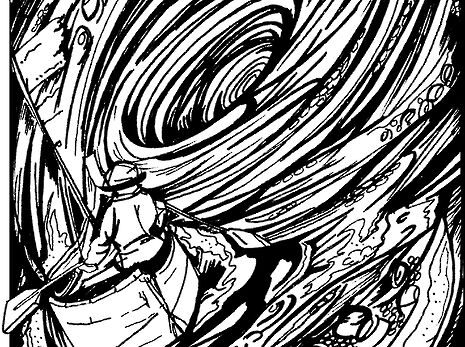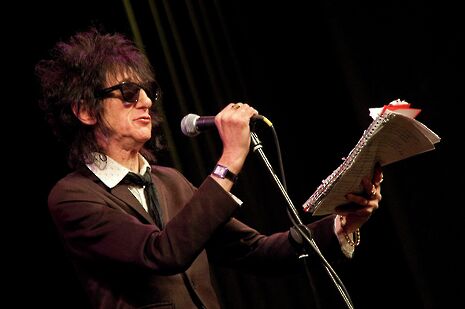Poetry in motion: from page to stage
“The art of finding the balance is difficult, but not impossible.” With another attempt to stage T.S. Eliot’s masterpiece The Wasteland on the cards this Michaelmas, Joe Foye shares his take on the struggle to move from page to stage, and why we should do it anyway

What is it about the considered word that is so enduring? Poetry has been kicking around in written form since at least 2500 BC, and theatre dates from the 6th century BC (practically a baby by comparison). But despite their age, both these art forms still seem to hold an irrefutable status as kings of culture in countless societies.
These behemoths of the literary world not only entertain, but generally serve to impart some deeper truth. Poetry is no stranger to the stage – performance poets like John Cooper Clarke and Kate Tempest can fill theatres. It is often considered that poems in their oral form actually predate written versions, which were simply created as a record of the spoken stories.
“A good play allows actors and directors to make artistic choices, whilst still requiring the audience to interpret other ambiguous elements of the play to reveal the deeper meaning. There’s a nuance.”
But if this is true, why is it that attempts to transfer written poetry onto the stage are so often fraught with difficulty? There are of course practical challenges. Should actors maintain the metre of a poem or favour more natural intonation? Should the words be dropped altogether in favour of a visual representation? There are innumerable questions that actors, directors and theatre technicians have to ask themselves. But I can’t help but wonder if there might be something deeper than this – a root cause as to why these page-to-stage translations so often fall flat with audiences.
Generally, a good play or poem can be subject to more than one interpretation – is Lady Macbeth supporting her husband, or manipulating him to seize power? I suspect most readers will have an answer to this. The poet uses imagery and symbolism to the same effect as the playwright uses dialogue. They act as a guide to the deeper meaning of a piece, asking questions, and sometimes steering towards answers.
The difficulty is in making sure that this quality is not lost in translation and it is difficult to strike a balance. If the director makes integral decisions of interpretation – decisions that usually fall to the reader – then they run the risk of leaving the audience feeling isolated. The audience are no longer required to engage with the work and explore its meaning. The interpretation is given to them, thus distancing them from the subtleties of the piece and leaving them markedly dissatisfied.

But why is this different to artistic decisions made in any play? After all, the actor playing Lady Macbeth will likely favour one interpretation of the character. The difference is that a good play allows actors and directors to make artistic choices whilst still requiring the audience to interpret other ambiguous elements of the play to reveal the deeper meaning . There’s a nuance.
With poetry, the writer does not foresee the intermediate stage, and so by making artistic decisions, actors and directors will be unavoidably answering questions which were intended to be posed to the final audience. The solution may seem simple: adopt a disinterested approach, turning the imagery itself into an immersive visual performance so that the audience can still interpret it for themselves. But it isn’t that simple.
A common candidate for stage adaptation is T.S. Eliot’s The Wasteland, a piece that relies heavily on considered interpretation to convey its message. The problem is that the language is frequently ambiguous enough that if we transfer the action directly onto the stage, then the audience cannot make any interpretation of it. It is like translating an English idiom to French: the literal meaning of ‘it’s raining cats and dogs’ would be kept, but the real significance is lost.
“Ironically, by making the theatre more immersive, we actually risk distancing the audience”
We can see this in The Wasteland. Towards the end of the poem, we meet a sailor called Phlebas, who “Passed the stages of his age and youth / Entering the whirlpool” (which pulls him down to a miserable demise). Looking at an online summary will tell you that this might be symbolic of his life flashing before his eyes, or of the metaphorical whirlpool draining away modern culture (we might suppose that ‘stages’ reveals its falsity). If this moment was simply staged as a man being pulled down into a whirlpool, almost all potential for the deeper meaning to be drawn may be lost.
If instead we choose any one of the meanings, perhaps acting out his memories, then we encounter the problem discussed above. The audience do not engage to the extent that they would with the written poem, and are left feeling somehow cheated. If we somehow try and portray both interpretations, then we risk making the piece feel confused. The problem then is clear: none of the options allow us to truly recreate the effect of the written word. Ironically, by making the theatre more immersive, we actually risk distancing the audience.
So do we give up on transforming poetry to theatre? Absolutely not. The art of finding the balance is difficult, but not impossible. A director interpreting the poem in a certain way might limit an audience’s ability to engage, but it may also help to reveal a new insight into the piece. This is particularly true of immersive theatre, which confronts audiences with a poem in sensory form, allowing them to better understand emotional aspects.
So, whilst we might be sacrificing one element of a piece, if other elements can be sufficiently enriched, then staged poems can be a valuable and rewarding artistic experience
 News / Clare Hall spent over £500k opposing busway 24 December 2025
News / Clare Hall spent over £500k opposing busway 24 December 2025 News / Caius mourns its tree-mendous loss23 December 2025
News / Caius mourns its tree-mendous loss23 December 2025 Comment / The ‘class’ of Cambridge24 December 2025
Comment / The ‘class’ of Cambridge24 December 2025 Comment / Yes, I’m brown – but I have more important things to say22 December 2025
Comment / Yes, I’m brown – but I have more important things to say22 December 2025 Interviews / Politics, your own way: Tilly Middlehurst on speaking out21 December 2025
Interviews / Politics, your own way: Tilly Middlehurst on speaking out21 December 2025









